The browser is called Fennec, and gets its name from a small, nocturnal fox found in the Sahara Desert, if my memory serves me correctly. O.K., I looked it up on Wikipedia. It's an appropriate title for the cute-but-vicious little cousin of the Web's most extensible, customizable, and progressive browser.
You'll gather from the first image that Fennec is designed with the touchscreen in mind.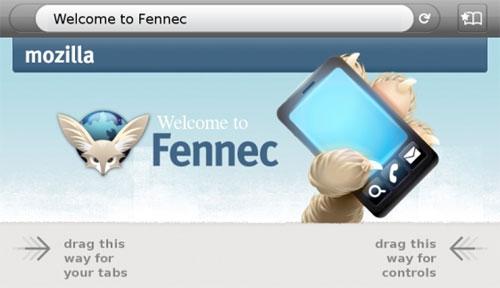
Is it just me, or does this ability to drag the desktop landscape from side-to-side remind anybody else of Noah's recent G1 review? (Check 2:45 - 3:00.) It seems like Android and Fennec could integrate nicely.
As you'll see below, Fennec is laid out to feel about two-and-a-half screens wide. None of the images have been cropped; this is how the program currently appears on the screen of a phone.
In the upper-right corner of the main screen, next to the address bar and go/reload button, there is a bookmark icon. Tapping it brings up all of your bookmarks, which you can of course select and jump to.
If you type an address, you'll be assisted by predictive text based on your history, and presented with icons for Google, Yahoo, Answers, and Wikipedia.
Dragging the main screen to the right presents a modified version of Firefox's tab bar; with screen previews, close buttons, and the option to open a new tab.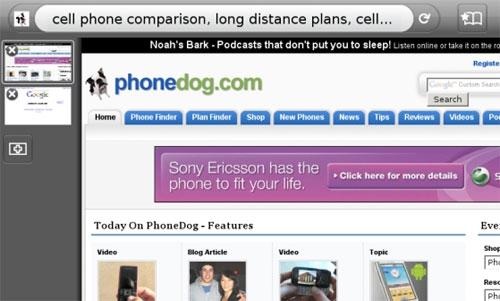
Dragging the main screen to the left reveals a panel; home to the add/edit bookmark, back, forward, and configuration buttons.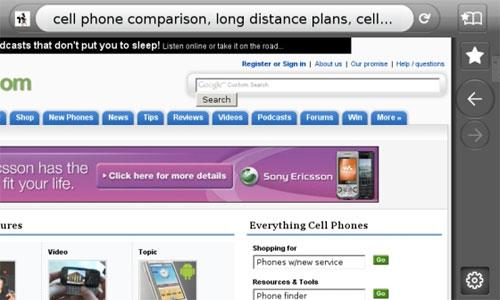
Kudos to the Fennec team for conserving some much-needed screen space by getting the navigation pane out of the way. Also notice that the page title appears in the address bar. Those folks at Mozilla sure know how to pack.
Clicking the configuration button opens up a sub-panel, where you'll find buttons for add-ons, downloads, and content/privacy/security settings - features familiar to Firefox users.
Here's the screen-cap for the add-ons section. The "Get Add-ons" button isn't functional at this point, but it's clear that themes will be available. If the Fennec skinning community is half as lively as its Firefox counterpart, we're going to have some beautiful software in our hands. Same goes functionality-wise for extensions and plugins. 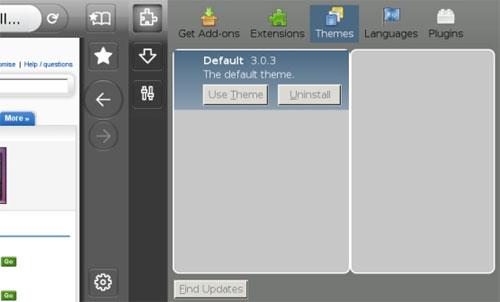
I did not capture an image of the downloads window, but I can tell you that there is a search function; presumably for locating downloaded files the user saved carelessly or hasn't accessed in a while.
And here's the content/privacy & security screen.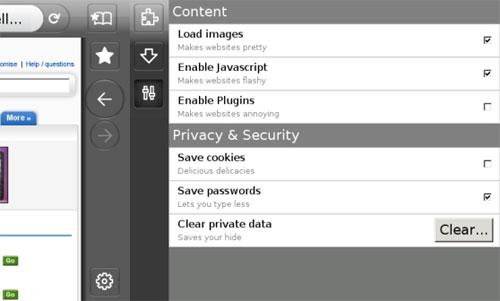
The Mozilla Foundation emerged from Netscape, and is responsible for the Firefox browser, Thunderbird email client, Sunbird calendar app, and a host of other free programs that don't just rival, but surpass, in my opinion, the well-known packages of which they are ostensibly "equivalents."
Firefox finally has considerable stake in the mainstream browser game; and with it, a position in the major league line-up noticeable to the average surfer. It has, far and away, the fastest-growing user base of any Internet browser. There is good reason for its growth and strong community support. It just makes sense for Firefox, or its progeny, to enter the mobile arena. Soon.
This is it right here. This is the future of mobile browsing. It's only just garnered the awkward status, "Milestone 9: User Experience Alpha." But I assure you, a likeness of the images above will grace the touchscreens of millions upon millions of phones over the course of the next year or two.